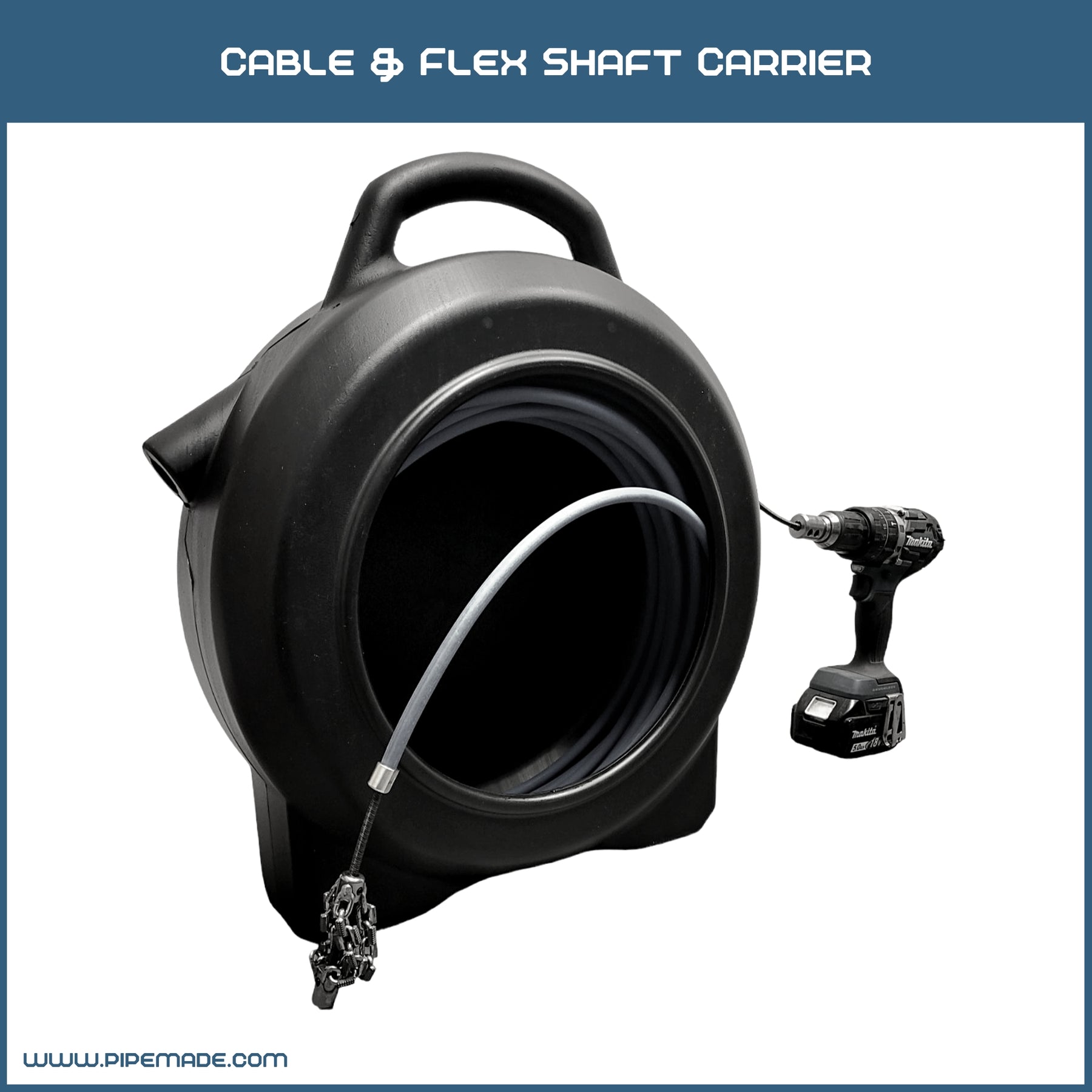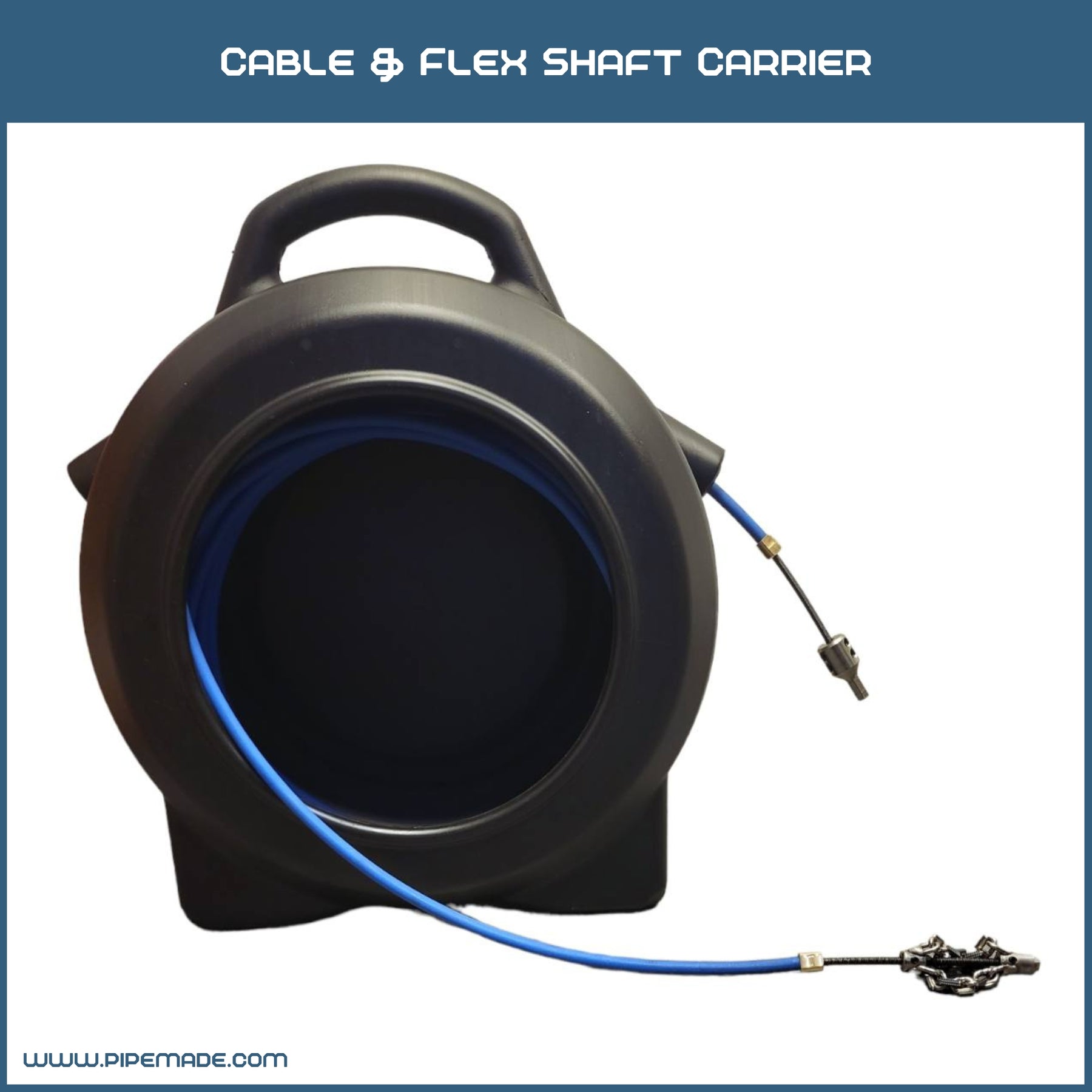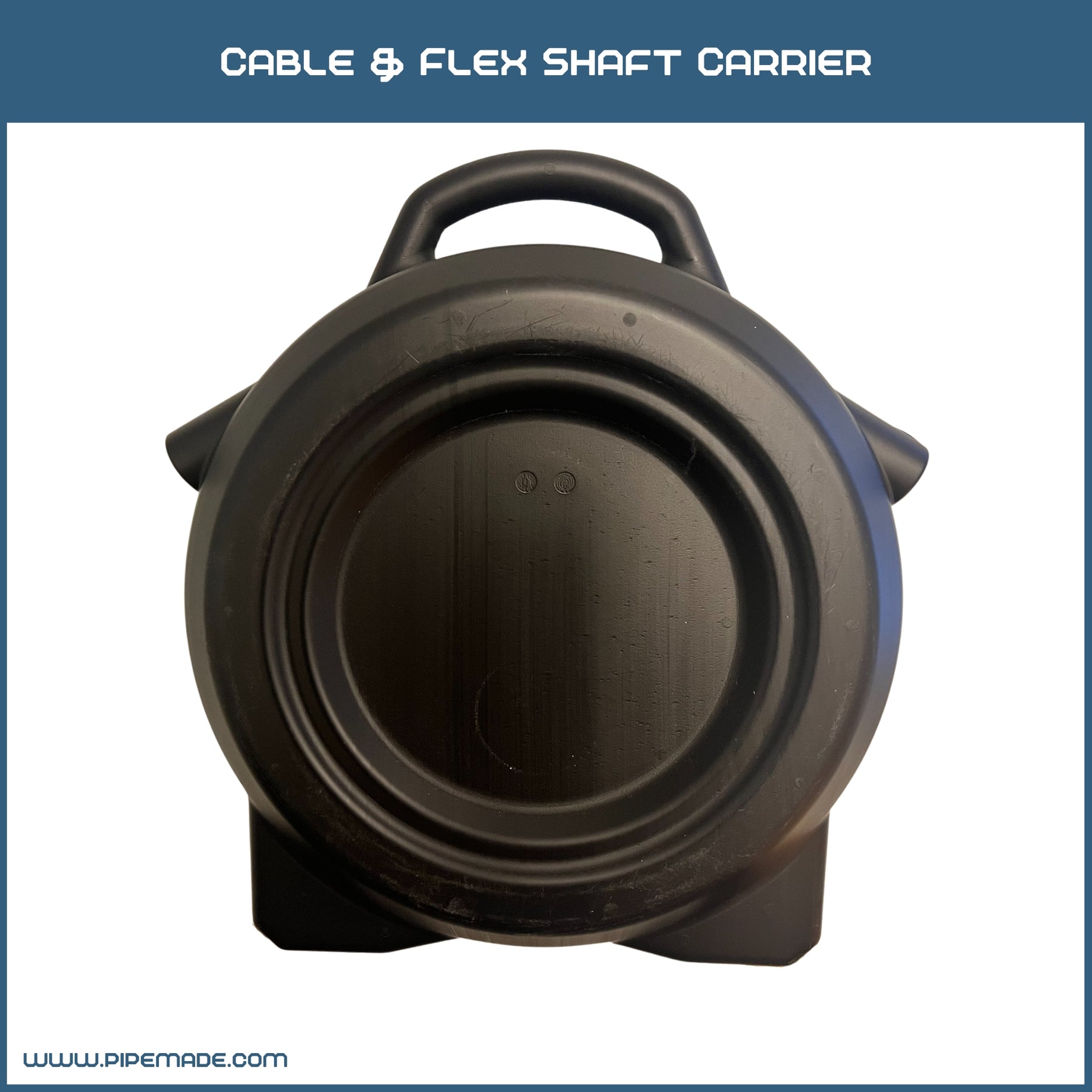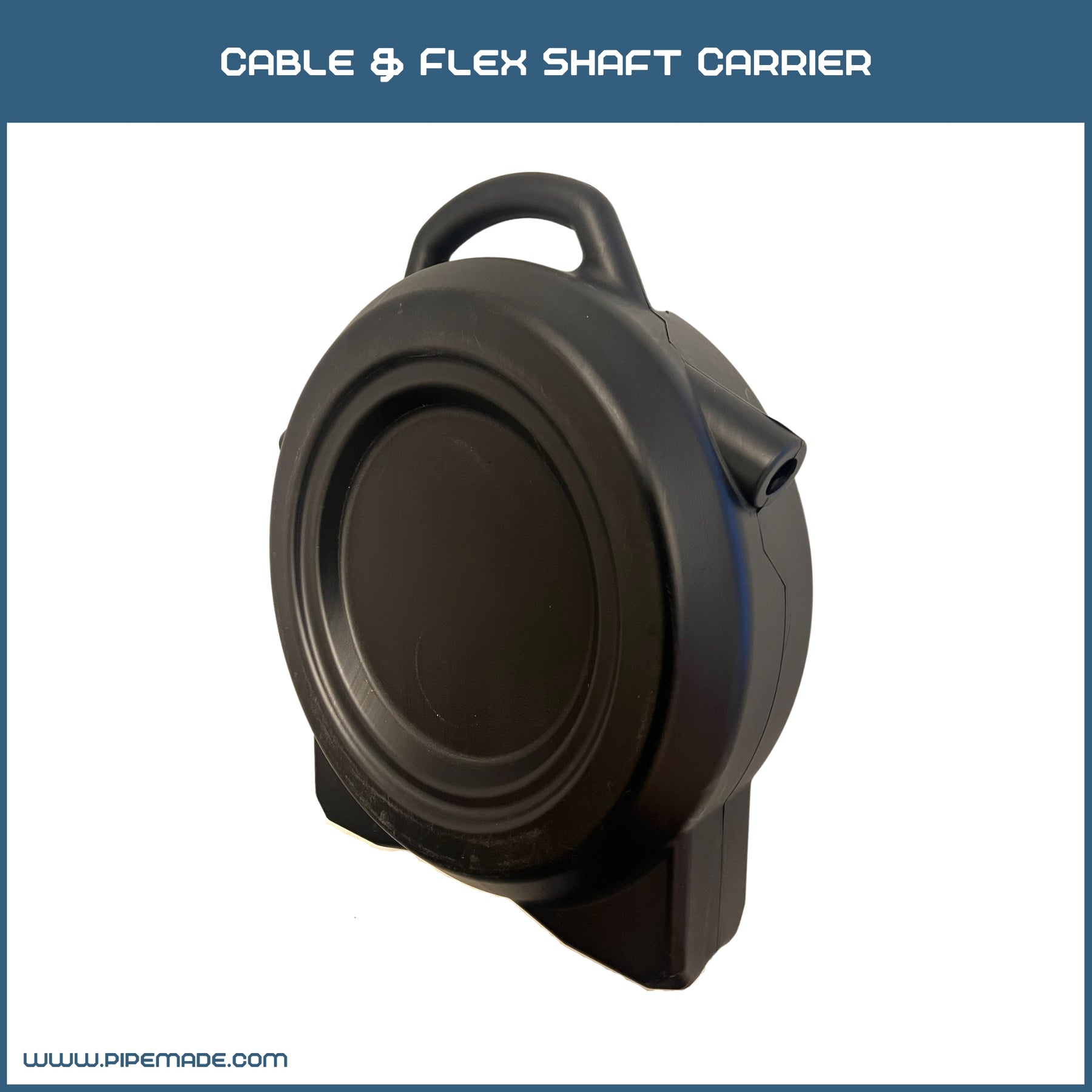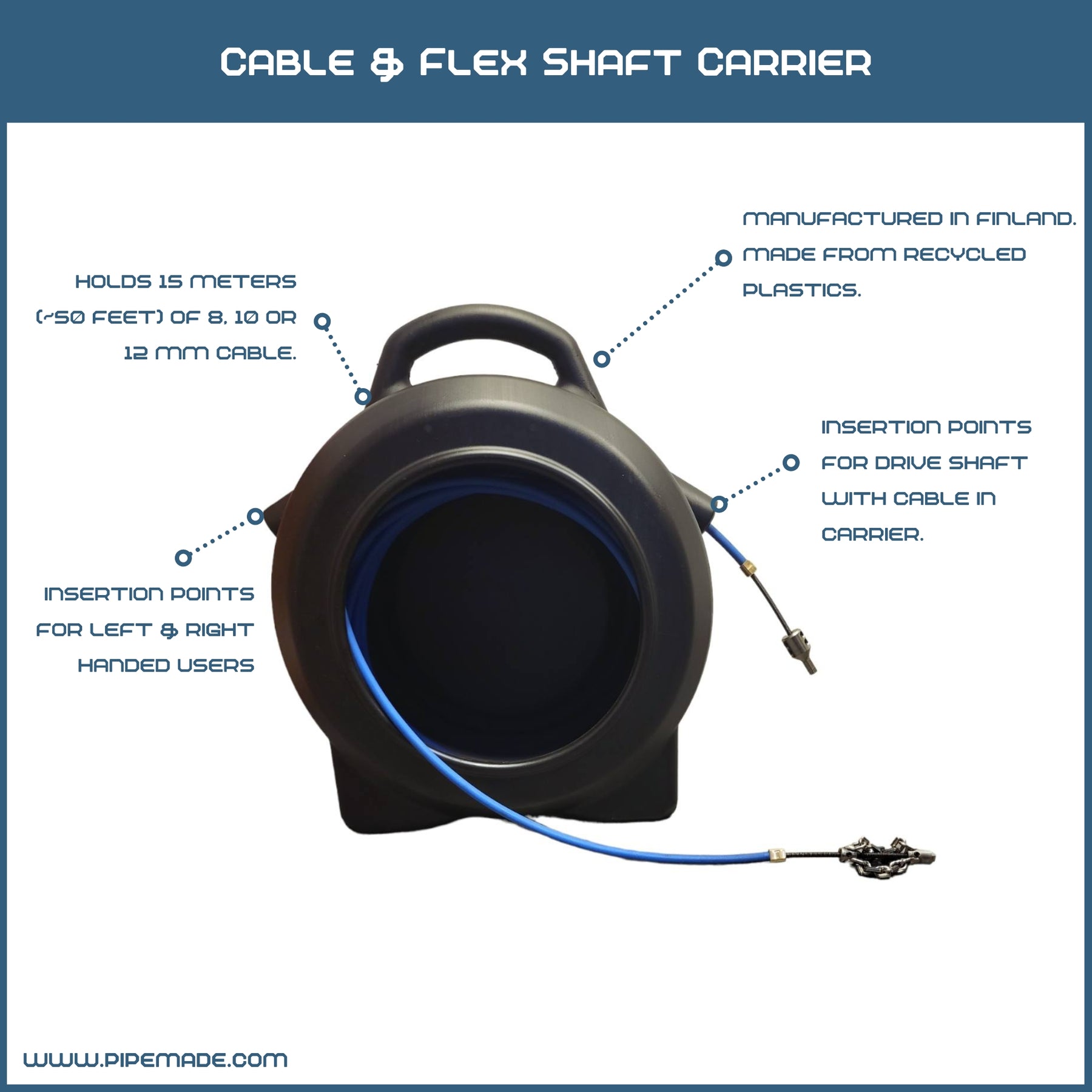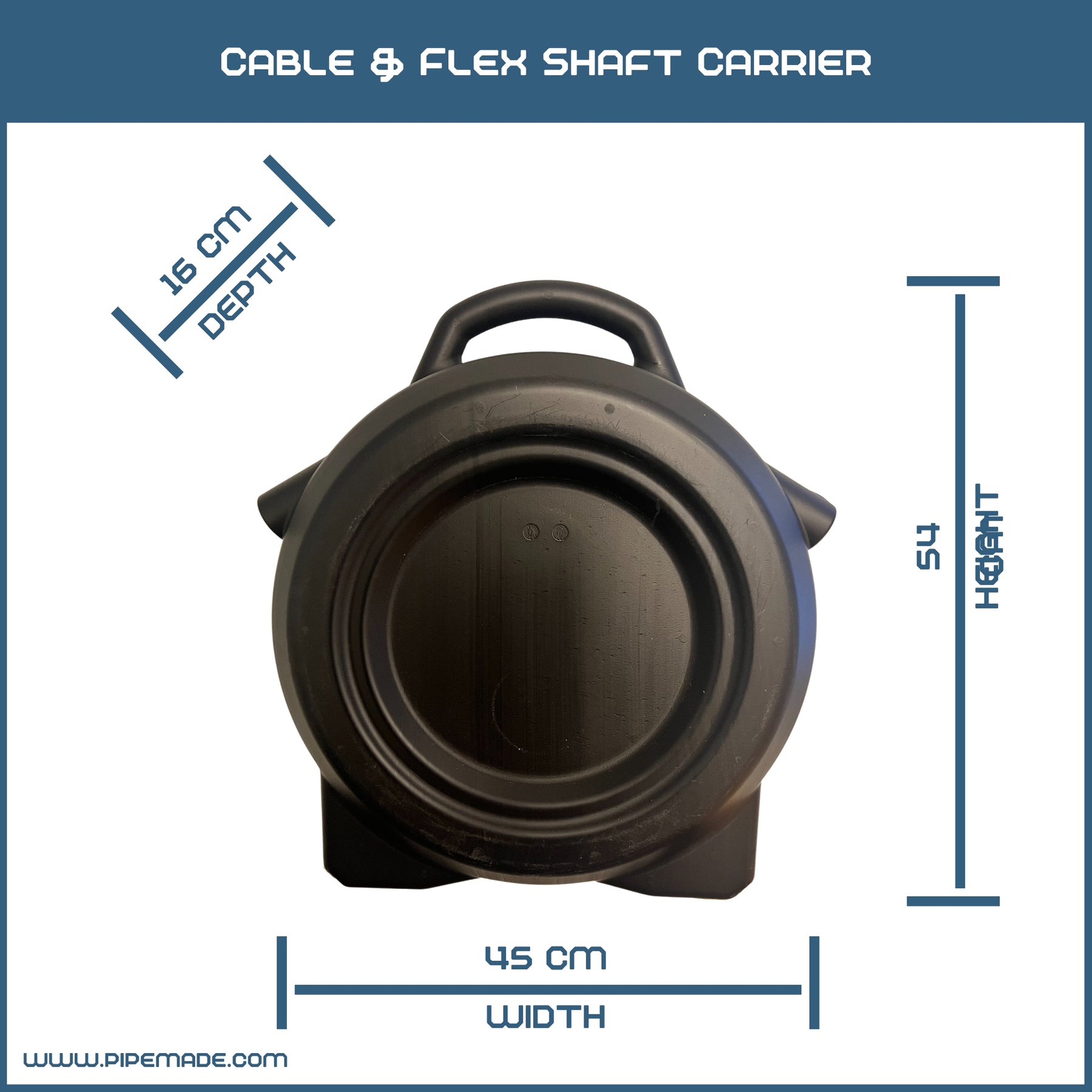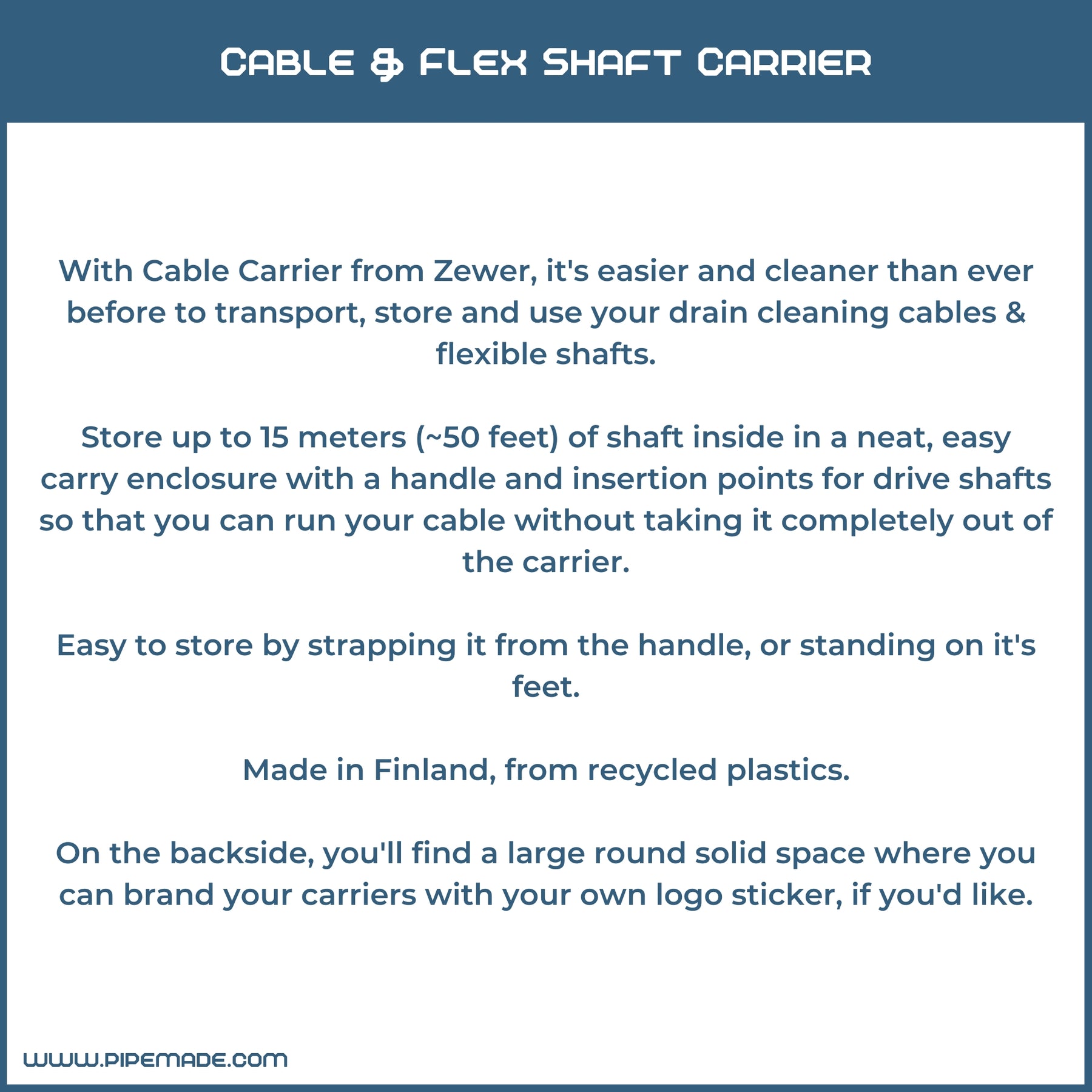Using flexible shafts in industrial drain cleaning can be the solution to getting into tight, twisted environments.
If you're looking for an efficient and effective way to clean drains, flexible shafts are a good solution. They are smaller, lighter and more flexible than other available alternatives. They're easier to clean and enable the use of a camera in drain cleaning. They're safer to operate and provide equipment life cycles up to three times longer than traditional power rodding machines. Follow these guidelines for selecting the right driving motor and flexible shaft features to help make your job easier.
Flexible shafts in drain cleaning machines
Flexible shafts used in industrial drain cleaning systems feature a flexible metal cable that threads into drain systems and around bends and joints. The cable is connected to a cleaning head with very sharp teeth, sized to the diameter of the pipe being treated. An electric motor rotates the cable, causing the sharp cleaning head to turn at a high rate of speed—obliterating pipe obstructions, shearing off protrusions, and shaving away years of sludge buildup. Small fragments of obstructive material are easily flushed away by water flow introduced into the pipe.
The flexible shaft is a precisely assembled group of springs that is tightly wound so that it has torsional or rotational strength. It transmits torque between two points that are not linearly aligned with each other while maintaining high flexibility along its length. This key feature makes flexible shafts so useful; they can bend while rotating, just like a solid one, but they also have tensile strength. Combined with their flexibility and tensile strength, this makes them an ideal tool for drain cleaning in tight spaces.
There are many advantages to using flexible drain cleaning shafts over traditional drain cleaning cables and rods
Flexible shafts offer a number of advantages over traditional drain cleaning cables. They are smaller, lighter, and more flexible than other kinds of cables used in drain cleaning. The low weight and size of the flexible shaft make it easier for drain cleaning machine operators to transport these tools to the job site. The flexible shaft is designed for high fatigue life cycle, providing 1.5 to 3 times longer life cycle for equipment compared to traditional power rodding machines. Their greater flexibility compared to traditional stiffer drain cleaning cables makes maneuvering them through drains easier. This is especially important for applications in which the clogged pipes are particularly bendy or hard to navigate. These flexible shafts are bi-directional rotation devices that can transmit torque in both clockwise and anti-clockwise directions. This critical feature ensures that if an accessory gets jammed into debris it can be freed easily by rotating it in the opposite direction.
The flexible shaft machine also allows for drain cleaning without water, which means that a camera can be sent through the pipe just behind the spinning end of the cable. This enables drain cleaners to see exactly what is blocking the pipe and adjust their cleaning method accordingly. Since no high-pressure water is used, the flexible shaft machine is safer to operate, and there is a reduced risk of dealing with high pressure fluid ruptures in the drain.
How does the flexible shaft work?
A useful analogy for explaining how the flexible shaft works is a comparison of a solid metal rod and a rubber band. The solid metal rod can transmit very high torque in a straight length but is difficult to bend or transmit torque in a bent condition. On the other hand, the rubber band is extremely flexible and can be bent easily but cannot transfer torque from one end to another. A flexible shaft has both torsion and flexibility properties, which is why it can go through tight drain bends while transmitting torque and rotary motion to chain knockers.
Keeping in mind the limitations of flexible shafts for drain cleaning use
When using flexible shafts to clean drains, be aware of their limitations. In particular, flexible shafts have several sources of energy loss: "external" losses that occur when the flexible shaft is in contact with the sides of the pipe and "internal" losses due to friction between layers in the shaft. External losses are independent of how the shaft bends and increase linearly with length; internal losses are proportional to bending radius and increase more quickly at small radii.
The total loss (TE) is the sum of the internal and external losses. It is equal to torque x rotational speed (rad/sec).
Rotational speed at the input is the same as rotational speed at the output in the flexible shaft's steady state. Assuming steady state and constant revolutions per minute (RPM) at the input and output end:
TE Input - TE output = Total loses in flexible shaft
And
(Torque in - torque out) x rotational speed (rad/sec) = Total losses in flexible shaft
If you use a flexible shaft, be aware that all of the losses in a flexible shaft result in torque loss along its length. The torque at output depends on the total losses at the bend and along the length of the shaft, as well as on input torque.
How to select the driving motor to ensure successful operation
Selecting the right motor for a flexible shaft is critical to success in drain cleaning. When choosing a motor for a flexible shaft, the following factors should help you select the proper input motor to meet your needs:
• The torque needed at the output end, which depends on the type of debris in your drain line. (T.out)
• The length and trajectory of your pipe. (L (length) and N (trajectory bends))
• The RPM needed to produce enough centrifugal force to clear out debris by centrifugal push of the chain. (ω)
As derived from the equations shown above, T.in = f (T.out, ω, N, L). Hence, T.in is calculated at a particular ω. This will further provide energy required at the input end = T.in x ω.
It can be assumed that the motor for T.in. will perform similarly in different applications, since it is manufactured as one package. Therefore, the effectiveness of a motor in drain cleaning operation can be determined based on its construction (shaft diameter, length, etc.), and its actuation motor rating.
Selecting the right flexible shaft
Consider these factors when selecting the flexible drive shaft.
• Diameter of drain
• Total number of bends in the drain (for the length of the drain to be cleaned)
• Type of debris (soft or hard obstructions)
As mentioned earlier, the length, diameter, and torque capabilities of the flexible shaft are determined by the requirements at both ends of the device. The debris to be cleared will determine how much torque the motor or actuation end can provide. The length is determined by drain design, which is constant for specific applications. A minor increase in shaft diameter provides exponential increase in torque transfer capability if the motor or actuator can provide end torque requirements in addition to potential losses at its end.
When determining the shaft diameter, you will need to know the specific blockage/obstruction and its distance from the opening. Most commercial package kits come in standard units for commonly used lengths. Chain knockers are provided as replaceable accessories.
Conclusion
Flexible shafts are a light, powerful, clean, and effective new method to clean drains. In most industrial drain cleaning applications, flexible shafts can serve as an excellent option. The right actuation motor and head accessories will help you achieve the best flexible-shaft arrangement for your system.


